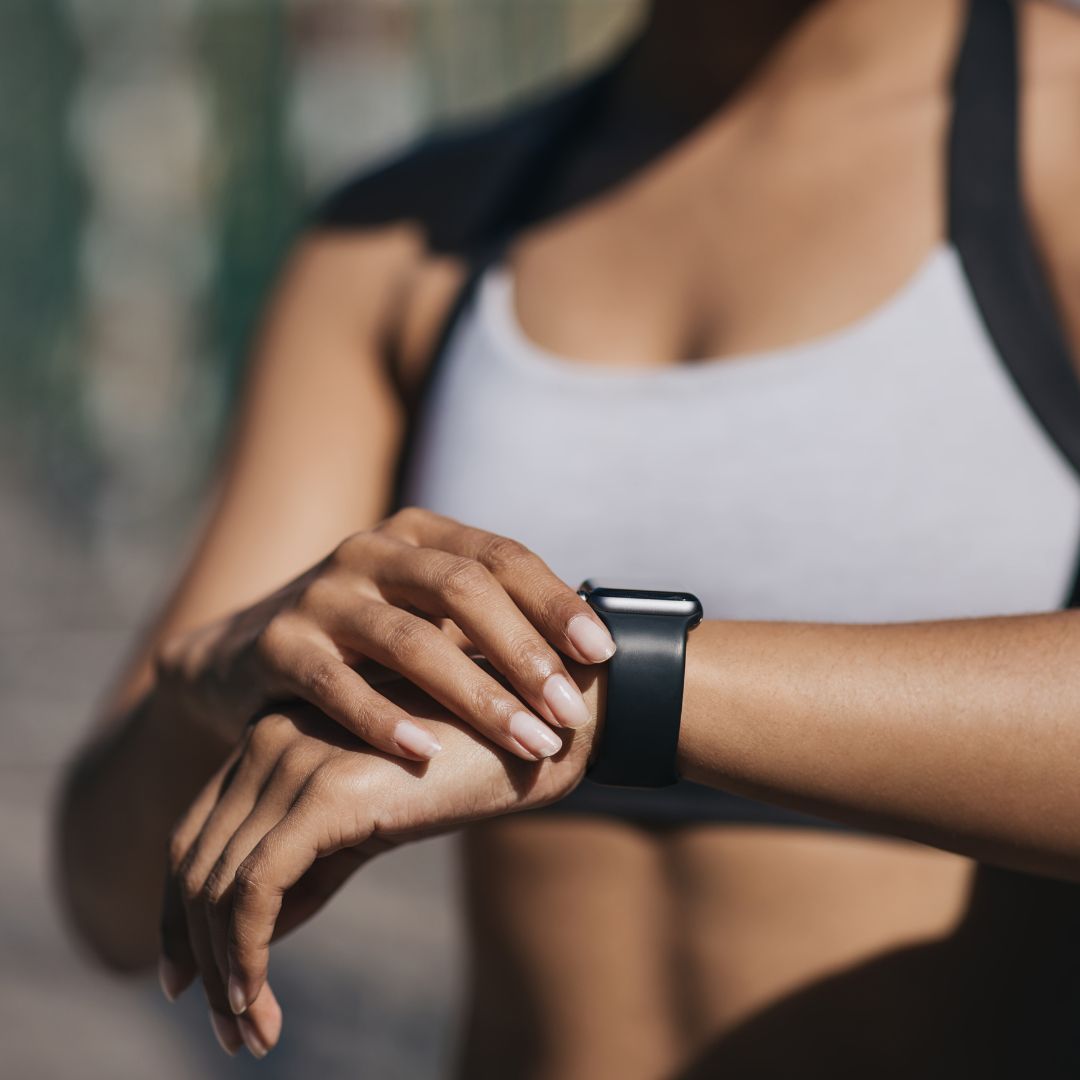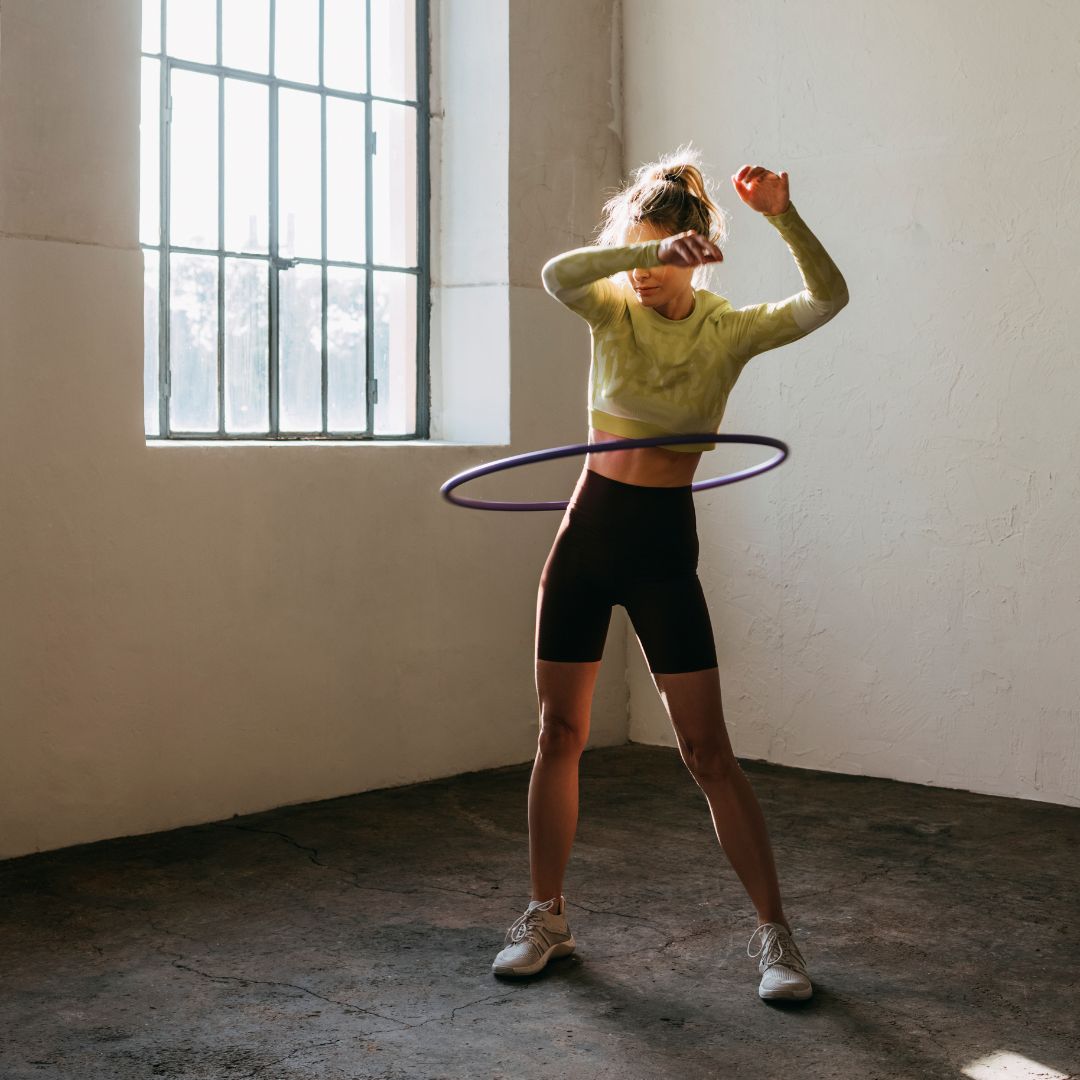It's official: these are the 15 simplest ways to motivate yourself to workout, according to world pros
Bookmark this one for later.


If you’re struggling to psych yourself up to exercise or wondering how to get motivated to workout, you aren’t the only one. Last year, one YouGov poll commissioned by World Cancer Research Fund revealed that lacking motivation is the top reason UK adults aren't more physically active. 38% of all participants admitted that they struggle with motivation. Which brings us onto the question - what actually is motivation?
When I think about motivation – not as an assemblage of biological and psychological processes, but in a more abstract sort of way – I imagine a pair of adidas Sambas. The trainers, named the hottest shoe of 2023 by fashion experts, were crowned one of the most in-demand designs of the year by JD Sports, selling out so frequently they became near impossible to purchase. When pairs were back in stock, fashion influencers would flock to broadcast affiliate links urging their audience to "run, don’t walk’".
Motivation, it seems to me, is similarly hard to acquire. Some people appear to instinctively know where to find it and how to harness it, while others remain continuously on the hunt, in search of hacks and secrets that might see them successfully improve motivation.
Obviously, exercise motivation isn’t something that can be stocked in an online store or sold via an affiliate link (I probably would’ve set up a weekly subscription by now, if it were). So how can we make it easier to access? Well, top experts reckon it starts with understanding the many factors that influence it.
Defined as the "energising of behaviour in pursuit of a goal" in this paper, it's long been accepted that motivation is influenced by internal and external conditions, as well as past experiences. One 2016 paper explains that there are also costs and benefits associated with behavioural action that may increase or decrease your ability to feel motivated. "Costs" refer to the effort, time, and money you might have to use, while "benefits" span your psychological and physiological needs.
What this means is that we don’t all have an equal ability to inspire training motivation – our individual circumstances (current health, stress level, the availability of the goal we’re working towards, the time of day, the weather where we are, our financial situation, and past experiences, to name a few) determine the outcome of our desire to feel motivated, and what makes one person tick may have the opposite impact on another.
Only trial and error is going to help you discover what helps you, specifically, feel motivated to exercise. So, to inspire your experimentation, I asked eleven top athletes and wellness pros for the simple habits they implement into their routines that motivate them to move their bodies. Keep scrolling to read their take.
Marie Claire Newsletter
Celebrity news, beauty, fashion advice, and fascinating features, delivered straight to your inbox!
Wondering how to get motivated to workout? 16 tips from top athletes and wellness pros
1. Set realistic and specific goals
First things first: “Define clear and achievable fitness goals that are meaningful to you,” says Third Space master trainer Lucie Cowan. “Whether it’s running a certain distance, lifting a specific weight, or improving your overall health, having a clear target gives you something to work towards and keeps you motivated.”
She recommends breaking down your goals into smaller milestones to track your progress and celebrate your achievements along the way.
2. Structure your week
Where many struggle with making time to exercise is when they end up shoe-horning sessions around other priorities. Of course, that doesn’t mean that training needs to be the most important aspect of your life in order for you to successfully stick to your plan (far from it!), but it does need to be a priority, according to PT Andy Vincent.
“Exercise needs to be elevated in the hierarchy of your week so it's not the thing that always gets moved,” he says. “Look at your diary the week before, spot times you can exercise, and stick to it.”
Vincent advises planning out your workout and setting reminders as you would if you had important work meetings to attend. “But don't stress out if the day blows up and you can't train. Life will always throw curveballs. It's not about smashing every week - rather, doing the best you can.” Senior Health Editor at MC UK Ally Head also swears by this trick, diarising her workouts every Sunday so she knows when she'll have time to move.
3. Prepare your workout clothes the evening before a session
Yep, that includes a pair of your best gym leggings, alongside, socks and scrunchies – anything you need to wear or use during your workout.
“This makes getting up earlier for a workout so much smoother, and takes the procrastination out of finding a workout outfit,” says PT and founder of Body By Barre Studio Natalie Rose Edwards. “Spend ten to fifteen minutes before you go to bed to organise your kit and place it near your bed so you can see it as soon as you wake up for an extra boost.”
Another top tip: In colder months, popping your kit on the radiator the night before means it'll be cosy and warm when you put it on. You're welcome.
@growwithjo ♬ Calm LoFi song(882353) - S_R
4. Sweat before you scroll
If you're a fan of a morning workout routine, Nicole Vignola, neuroscientist and author of Rewire, out in May, advises steering clear of social media until after your session. “Morning phone use is increasing your dopamine right at the beginning of the day,” she explains. “If we look at a dopamine curve it spikes and then drops a little bit below baseline. What happens is, if you’re spiking it really high with something so rewarding like social media, everything after that is going to feel a bit dull,” she explains. So, all of a sudden, exercise has lost any of its appeal.
To get around this, she recommends doing all your morning habits – including exercising, where possible – in the morning before picking up your phone.
“Generally speaking, you will probably never be motivated to exercise if you’re going from lying down to standing up,” Vignola says. “It’s about the discipline and routine. So, even if it means getting up and committing to just doing five reps, you may then find you can do ten, because as you’re exercising you’re raising dopamine levels which makes you feel better about the thing you’re doing, and it becomes a reward-seeking behaviour in itself.”
5. Don’t compare yourself to others
Comparison, they say, is the thief of joy – something that’s actually quite important where training consistency is concerned. As such, England rugby star Ellie Kildunne advises trying to avoid getting distracted by what others are up to, instead focussing on your own goals and actions.
“You have to remember the real reason why you do it,” she says. “That’s how you keep your discipline and motivation because you know your why; not for anyone else but for that one reason.”
Try this: Work out your why and return to this on days when you don't feel like moving or would rather stay in bed. That why could be building a body for life that allows you to carry your children or shopping bags from the car with ease, to be the best version of yourself, or something aesthetically-focused. Whatever works for you.
6. Embrace the social element of exercise
If you struggle to feel motivated by the health outcomes associated with working out, the prospect of social interactions may help.
"My number one tip for boosting motivation to workout is to make it social, particularly when my schedule is extra busy," says Dr Frankie Jackson-Spence.
"Attending group classes is a great example of this. I love attending F45 classes – the energy in the studio is unmatched and because of this, I never feel like I've had a bad workout and I've never gotten bored. I also see the same faces in my classes each morning, and they have now become friends. Knowing they will be there motivates me."
She also loves a weekend long run with friends, followed by a frothy coffee and a almond croissant. "Not only does running with a friend make me feel more motivated and enable me to fit in both a workout and a catch-up at the same time, but I often find that time flies by as we chat every step of the way," she shares.
This is a sentiment that England Women bowler Lauren Bell shares. “Exercise classes and team sports are great for fitness and at the same time make a good social activity,” she says. And, if team sports aren't quite your cup of tea, joining a running or walking club may be ideal.
“You don't have to exercise for long periods of time, short and often is great,” Bell adds. “Most importantly, for me, it’s about ensuring you enjoy yourself in everything you do and be yourself.”
7. Download a good playlist
"I love to listen to music," says professional boxer Caroline Dubois. "Not only is it a great tool to get into the mood and help boost energy for your session, but I find it also helps me with visualisation."
This is another trick Health Ed Ally Head backs, too - it's hard not to want to move if you've got some great pop songs blasting in your headphones. See her Berlin Marathon playlist below.
8. Try the five minute rule
Senior Health Editor Ally Head uses this technique regularly - so much so, she's written an entire dedicated article on how the five minute rule works. It's as simple as it sounds: on days when you don't feel like you can be bothered to workout, tell yourself you only have to workout for five minutes. If you're still not enjoying it when the timer is up, throw in the towel and try again tomorrow (some days, you're just not feeling it).
The theory on this one is that five minutes isn't a daunting amount of time to move, but might prove to you that actually, it was the getting up and out that you were dreading or putting off, not the workout itself.
Record holder Paula Radcliffe shared a similar pearl of wisdom in an exclusive interview with MC UK last year. “I used to have a ten minute rule where, if I wasn't feeling better 10 minutes into the run, then I could turn around and come back and usually that would help,” she said. She also had a few favourite, less challenging, routes that she’d opt for on low-motivation days to ensure she still got the miles in.
Edwards agrees that removing the pressure and lowering the barrier to entry by reducing workout duration may help to give you the nudge you need to get started.
“When you are lacking motivation, the last thing you want to do is a 60 minute strength workout – that can feel overwhelming and sometimes unrealistic if you have a busy schedule,” she says. “Instead, opt for shorter workouts between ten to fifteen mins every day or every other day, to gradually build strength, endurance and momentum. Enjoy those endorphin boosts and start to actually look forward to your short and sweet workouts.”
Of course, taking adequate rest days is absolutely key in any training plan, but sometimes, your brain is the biggest barrier. More often than not, once you get moving, you'll be grateful that you did and reap both physical and mental health benefits.
9. Find activities you enjoy
This one's absolutely key when it comes to workout motivation - because let's be real, you're never going to stick to a plan or style of training if you don't enjoy the workout.
Cowan advises exploring different types of physical activities to find those you genuinely enjoy. “Whether it’s swimming, hiking, dancing, or playing a sport, choosing activities that you find fun and engaging makes it easier to stay motivated and stick to your workout routine,” she says. “Experiment with different workouts until you discover what resonates with you and keeps you coming back for more.”
Not sure where to start? We've got heaps of workout content on site for you - from walking workouts, to strength training exercises, to Barre classes, the world is your oyster.
10. Stick to a training program
According to Vincent, the single most important thing anyone can do to boost workout motivation is to follow a workout plan. “Trying to make things up on the fly or searching for a suitable YouTube video to follow before training is just one more barrier to stop you from training,” he says.
Try this: “There are plenty of places to get programs, either paid or free. A basic program, stuck to consistently, progressed over time, and effort applied will trump random training 100x over.” Gym workouts at the ready.
@katepfeifer ♬ original sound - Kate | Women’s Health Coach
11. Hydrate as soon as you wake up
Bear with us on this one - because yes, dehydration can actually impact your desire to want to move. How? “Feeling dehydrated is going to leave you feeling sluggish with low energy and increased cravings,” says Edwards.
Try this: She recommends drinking water first thing in the morning and throughout the day so you feel hydrated and energised for your training session.
12. Reward yourself for working out
This one you'll be familiar with - but it can be incredibly effective at getting you up and out, share our experts. “Try setting up a reward system to incentivise your workouts,” Cowan suggests. “After completing a certain number of workouts or reaching a milestone, treat yourself to something you enjoy." This could be a relaxing massage, a new workout outfit, a new book or a solo coffee date.
"Having something to look forward to can boost your motivation and make exercising feel more rewarding,” she adds.
13. Consider self-hypnotism
While opting for hypnotherapy may feel a bit drastic Dr. David Spiegel, Associate Chair of Psychiatry at Stanford School of Medicine and founder of self-hypnosis app Reveri, reassures us that it can be an incredibly effective tool for reframing a negative mindset. Case in point: just a short hypnotherapy session can help you feel more present and prepared to exercise.
“I encourage people to think of their body as if they were their child, because your body is as dependent on you as your child is but we don’t think of it that way,” he says. Alternatively, think about exercise as though you’re taking your dog for a walk. “The dog has been hanging around the house all day and wants to get out and run around – your body has been hanging around while you’re sitting in a chair working, and it wants to get some activity,” Dr Spiegel says.
He advises completing a self-hypnosis session, by using the app or simply tuning into your body, to ask “body what would you like to do? What would make you feel better?
“Try and also picture a way of enjoying it – it feels good when you feel your muscles moving and you get your heart rate and your respiratory rate up.” Imagining a type of activity you have enjoyed in the past may be helpful. “Try and summon up experiences where your body feels good and, therefore, you feel good when you’re doing it.”
@allyyyhead ♬ original sound - Ally Head | Runner & Health Ed
14. Workout what motivates you
“Let's be very clear - no one is motivated to train all year round,” says Vincent. He’s right – even top athletes and trainers, including those sharing their wisdom in this article, experience spells where they don’t have a desire to exercise.
Instead of focusing so much on locating or boosting your motivation, Vincent recommends finding ways to ensure you train even when motivation is low. “Are you motivated to go to work every day? Are you motivated to do any of the things you have to do every day? Clean up, feed the kids, brush your teeth,” he asks. “You do these things either because you have to or you know they are important.”
He advises getting really clear on why it is that you want to workout. “If you have a strong reason to do it, you are much more likely to turn up for each session,” Vincent says. “How about being able to play with your kids and grandchildren when you are older? How about being able to run your fastest ever 10k pace?
Note this: he's not talking about goal setting, rather, your overall mindset towards exercise. "If the only reason you train is for aesthetic reasons, you will probably always struggle to find motivation," shares the PT. "A mindset shift towards health, longevity, and physical performance could be the most important tool in your arsenal."
15. Break your workouts down
This trick is something Health Editor Head shares that she used while training for her 37-mile ultramarathon back in 2021. "If you're finding your sessions daunting or not wanting to do them, chances are, you've bitten off more than you can chew," she explains. Instead of working out for 30 minutes, start at ten and then build it up.
Another method in this same vein is compartmentalising sections of your workout, or breaking it down into smaller chunks. "For example, a ten mile long run might sound daunting, but if you frame it as a two mile warm up, two mile cool down, and six mile run, it suddenly doesn't seem so unachievable." Got it?
Shop MC UK's go-to workout kit now:

Keen to reward yourself for sticking to your training schedule? This Adanola knit sweatshirt is perfect for pairing with leggings for a post-lift brunch.

A large capacity reusable water bottle will help ensure you stay hydrated all day long.

One of the best wellness planners out there, keep a log of your training plan in this cute and convenient Papier notepad, a surefire way to make scheduling all of your sessions easier.

Abbi Henderson is a freelance journalist and social media editor who covers health, fitness, women’s sport and lifestyle for titles including Women's Health and Stylist, among others.
With a desire to help make healthcare, exercise and sport more accessible to women, she writes about everything from the realities of seeking medical support as a woman to those of being a female athlete fighting for equality.
When she’s not working, she’s drinking tea, going on seaside walks, lifting weights, watching football, and probably cooking something pasta-based.
-
 Andrea's It List: Finishing touches that elevate any outfit
Andrea's It List: Finishing touches that elevate any outfitDon't underestimate the power of accessories that make your outfit pop
By Andrea Thompson
-
 The fashion set is obsessed with lace-up shoes right now—these are the best pairs to shop
The fashion set is obsessed with lace-up shoes right now—these are the best pairs to shopNew summer footwear obsession, unlocked
By Sofia Piza
-
 I tried Pilates roll-downs every day for a week - and was amazed at how quickly it eased years of stiffness
I tried Pilates roll-downs every day for a week - and was amazed at how quickly it eased years of stiffnessConsider my spine more mobile than before.
By Rebecca Shepherd
-
 Spring has finally sprung - 6 best outdoor workouts that are totally free and boost both body and mind
Spring has finally sprung - 6 best outdoor workouts that are totally free and boost both body and mindSoak in the nature and boost Vitamin D *and* endorphins.
By Anna Bartter
-
 The entire UK seems to be obsessed with saunas RN - 9 benefits to know about, if you're considering giving them a go
The entire UK seems to be obsessed with saunas RN - 9 benefits to know about, if you're considering giving them a goEnter your Scandi girl era.
By Anna Bartter
-
 Experts are calling the 4-2-1 method one of the most effective fitness routines you can do, period - so, is it?
Experts are calling the 4-2-1 method one of the most effective fitness routines you can do, period - so, is it?Your need-to-knows.
By Katie Sims
-
 Still finding it too cold to exercise outside? 7 best advanced home workouts to boost muscle and endurance
Still finding it too cold to exercise outside? 7 best advanced home workouts to boost muscle and enduranceBecause home workouts aren't just for beginners.
By Anna Bartter
-
 I tried Jennifer Aniston's 80/20 approach to wellness - and can't tell you how refreshing I've found it
I tried Jennifer Aniston's 80/20 approach to wellness - and can't tell you how refreshing I've found itIt's all about balance.
By Katie Sims
-
 It's one of the most fun home workouts you can do: 6 best exercise hula hoops to add to your fitness regime
It's one of the most fun home workouts you can do: 6 best exercise hula hoops to add to your fitness regimeThey're very affordable, too.
By Amelia Yeomans
-
 As a Health Editor who works out six times a week, here's how cold water showering transformed my post-workout routine
As a Health Editor who works out six times a week, here's how cold water showering transformed my post-workout routineMira Showers' ColdBoost technology has been a game-changer.
By Ally Head
-
 I tried eating high protein breakfasts every day for seven days - and my energy and hunger levels have never felt so balanced
I tried eating high protein breakfasts every day for seven days - and my energy and hunger levels have never felt so balancedKickstart your day with a high protein feast.
By Anna Bartter